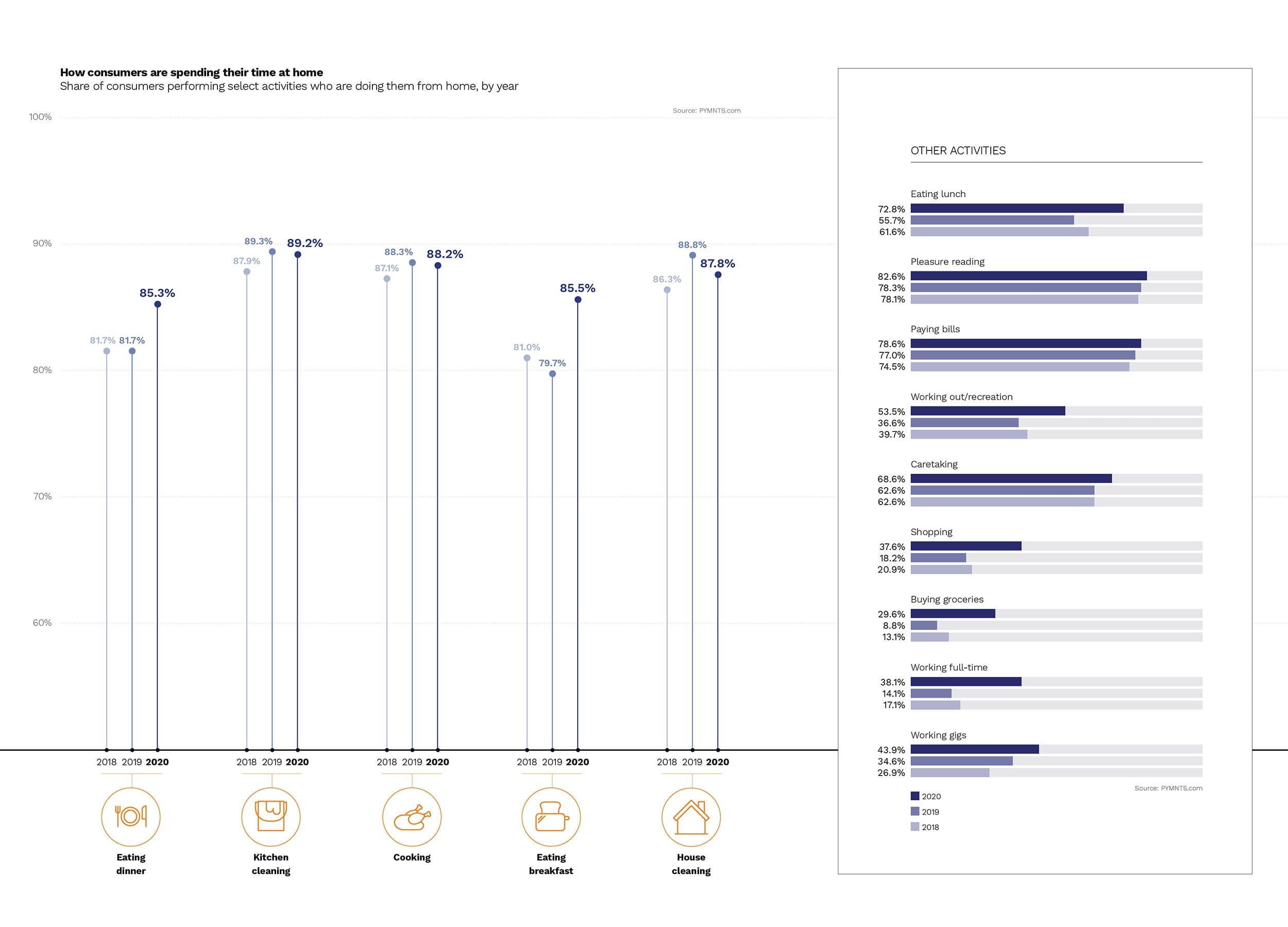Digital-First Economy Transforms Home Into Commerce Center

It has been a big year for defining and redefining what a home is, and what exactly it’s for.
The very concept of home has changed during the pandemic. It has meant that home is where most of us have been for most of the year, and where we have learned to do just about everything. We work from home, youth are attending primary school and college from home, we enjoy most of our entertainment at home via myriad streaming options that are suddenly available and we prepare most of our meals at home — and even the ones we order in are still being eaten at the kitchen table. As PYMNTS/Visa’s 2020 How We Will Shop Survey demonstrates, whatever else home is to consumers, by August of 2020 it had been transformed into their personal commerce command center.
A year ago, staying connected at all times also gave consumers the freedom to shop and pay for what they found whenever and wherever they pleased — and often as a part of their day-to-day routines. The report shows 76 percent of consumers reported making purchases during at least one of their daily activities. That has accelerated dramatically as consumers have reconfigured their lives this year around the digital-first economy. Three times as many consumers shop from home this year as did last year. Twenty-three million consumers used voice assistants to make purchases — up 42 percent since 2018 and up 10 percent since 2019.
On the whole, the study found, consumers are performing 12 percent more activities at home in 2020 than they did in 2019 and making purchases during 12 percent of those activities, on average. Also, that charge toward the digitization of the home as a digital activity and commerce command center has been largely driven by millennials consumers, bridge millennials in particular. As the first generation of consumers to have grown up with connected devices at hand, they’ve slid fairly comfortably and easily into digitized shopping and pay channels. And are now established enough to be settling down and building households of their own — households increasingly powered by connected devices that allow them to browse, shop and pay all without ever having to exit their front door.
And though the trend is being pushed hardest and fastest by those highly-connected bridge millennials, the survey made clear this is a phenomenon that has been sweeping through the general population as well. The share of consumers who report shopping and paying for retail purchases from home has doubled over the last 12 months, while the share of grocery shopping from home has tripled.

Moreover, as PYMNTS has surveyed consumers throughout the year, it has become increasingly clear that the digital shifting that characterized their behavior over the last eight months is likely to endure, even after the COVID-19 pandemic has finally drawn to a close. Consumers have mostly found digitization a convenient alternative to physically doing their errands on a weekly basis, and with the possible exception of in restaurant dining, they continually express a greater intention to keep on with their digital habits beyond the point where it’s a matter of pure necessity.
And, perhaps not surprising given their status as leaders when it comes to the transforming the home into a digital hub, bridge millennials and millennials are the demographic most inclined to stay digital over the long run.
That reality is having a pull in markets one might not ordinarily expect —for example, the world of modular home construction. This week Dvele — a firm that bill itself as a “next-generation modular homes producer” — announced its rollout of DveleIQ, the first whole home solution built bottom up with artificial intelligence focused on keeping its occupants healthy. To achieve that rather lofty goal, Dvele said it will equip homes with systems that allow the home to be intuitive and improve over time.
“When we evaluated the market looking for a smart home partner, nothing aligned to our core tenets of occupant and planet health, so we decided to move the industry forward and build the first 100 percent integrated, intelligent, software-defined home, complementing our self-powered home product. Delivering our promise of quality of life through integrated intelligence,” said Dvele President Matt Howland.
Moreover, he noted, that technological integration is designed to be nearly invisible to the occupant — the home observes and learns, then optimizes on its own based on the occupants’ habits.
Millennials, notably, have come up rather quickly as the buyer demographic that has shaped much of the 2020 real estate market thus far, and are expected to continue that trend. As PYMNTS has reported, it’s a reality driving ripple effects all through the economic ecosystem.
And according to the data and pivots by firms like Dvele, it looks like one of those ripples is changing how homes are being developed and taking a turn toward smarter.
